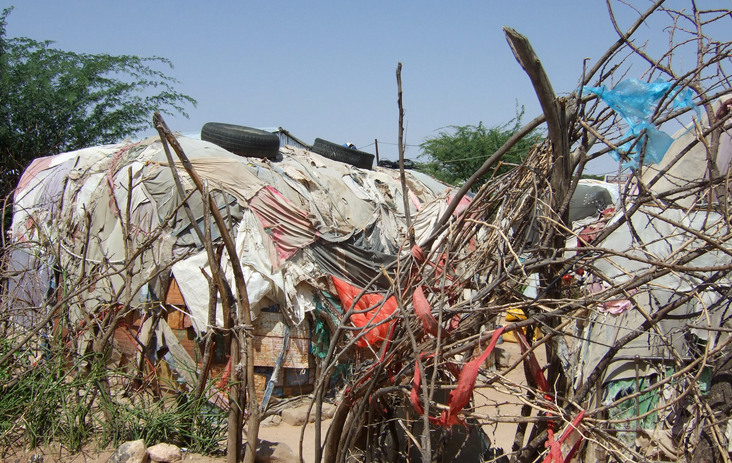Ed note. This is a special guest post from Mark Yarnell of Refugees International
(Hargeisa, Somaliland) “What we need most is to have our own land.”
This is the message I heard during my recent visit to a displacement settlement in Hargeisa, Somaliland. The people I met have spent the last 20 years in the ‘State House’ settlement for returnees and internally displaced persons (IDPs). There are several thousand households living here in makeshift shelters, crammed only a few feet apart. The shelters are built on land owned by the Somaliland government, and surround the crumbling edifice of the once grand State House headquarters, built during the colonial era when Somaliland was a British protectorate.
Many of the residents of this camp were once refugees in Ethiopia. In the late 1980s, they were among the hundreds of thousands who fled fighting between forces of the Siad Barre regime, based in Mogadishu, and those of the Somalia National Movement in Somaliland. When the Barre regime collapsed in 1991, Somaliland declared its independence from its southern neighbor (although that independence is not formally recognized by the international community).
With peace restored, those who fled began returning to Somaliland. But many had lost access to their land or were unable to return to their pastoralist livelihoods and were relegated to squatting on public land in Hargeisa. They went from being refugees in Ethiopia to IDPs in their home country. Many IDPs (or, more appropriately, returnees) have established firm roots where they settled and have integrated themselves into the local economy. But they live under the constant threat that the government will seek to reclaim the land under their feet. The ever-temporary nature of their residency limits their ability to establish permanent structures, while also making it difficult for donors and aid agencies to invest in infrastructure projects.
The existence of the State House camp is a stark illustration of the reality for many displaced returnees throughout the region who lost access to their land upon their return. Hargeisa’s displaced have been unable to escape the uncertainty and restrictions that prevent them from being truly settled, in spite of the fact that they – unlike many Somalis – live in a region that has been relatively stable for the past two decades. Although the Somaliland government has its flaws, the level of stability and governance that exists in Hargeisa cannot be found in most other parts of Somalia.
To the east and south, pervasive conflict and food insecurity in Somalia has forced around a million people to seek refuge in neighboring countries, and another million to be displaced within the country. But now, as African Union peacekeeping troops make gains against Al-Shabaab and political developments in Mogadishu continue to advance, there are more and more discussions among donors and host governments about the possibility of large-scale returns. The Kenyan government, for example, has been particularly aggressive in pushing for Somalis in the country’s Dadaab refugee camp to return to Somalia.
It is critically important that any returns of displaced populations must be safe, voluntary, and dignified. But for those who do want to return home, the current reality in Somalia presents a major challenge. Even if stability does return, will they have access to their land? Will they be able to restart their livelihoods? Or will they go from being refugees in one country to IDPs in another?
To be clear, there are opportunities for small-scale returns in Somalia, especially for those who fled their homes due to the most recent drought and famine. But as the State House settlement in Hargeisa clearly demonstrates, without secure access to land or the possibility of pastoralists to re-start their livelihoods, returning “home” can lead to a very uncertain future.

